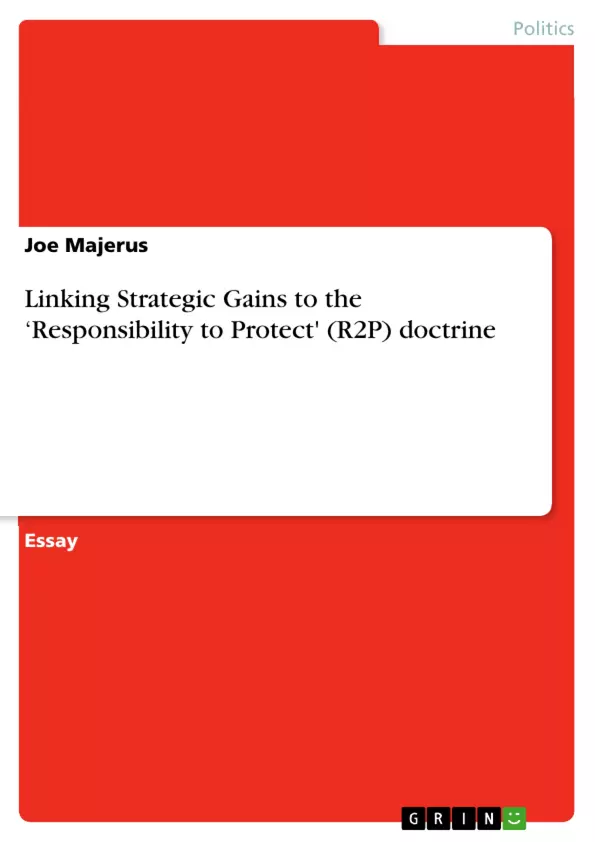The "Responsibility to Protect"-Doctrine (R2P) is not as much an obstacle to ending human suffering in war-torn countries as its detractors maintain. Originally conceived as a UN-sponsored attempt to provide the international community with a more efficient instrument for preventing or halting mass violence and human rights violations, it was hoped that R2P would overcome the controversies frequently associated with humanitarian interventions. Yet ever since its conception, R2P has likewise met with extensive criticism in regard to some of its key tenets. In particular it is argued that a potential military intervention in governments' internal affairs not only constitutes an encroachment upon state sovereignty, but also merely serves as a pretext of stronger states to impose their will upon weaker ones.
Inhaltsverzeichnis (Table of Contents)
- Introduction
- Analysis
- R2P and Military Action
- Prospects for Intervention
- Humanitarian intervention as part of geostrategic concerns
- Conclusion
Zielsetzung und Themenschwerpunkte (Objectives and Key Themes)
This essay critically evaluates the effectiveness of the Responsibility to Protect (R2P) doctrine in preventing or stopping mass atrocities, specifically in the context of the ongoing Syrian civil war. It challenges the widely held view that R2P's "illusory military solutions" are the main obstacle to international action in Syria.
- The role of military action within the R2P framework.
- The tension between state sovereignty and non-interference, and the promotion of human rights.
- The relationship between humanitarian intervention, regional stability, and transnational terrorism.
- The evolving understanding of state sovereignty in the 21st century.
- The need for a more comprehensive approach to addressing humanitarian crises that considers both humanitarian and strategic factors.
Zusammenfassung der Kapitel (Chapter Summaries)
The introduction sets the stage for the essay by discussing the aims and criticisms of the R2P doctrine. It then delves into the Syrian civil war as a case study of R2P's limitations.
The chapter titled "Analysis: R2P and Military Action" critically examines the role of military action in R2P, highlighting the concerns surrounding unauthorized intervention and the potential for adverse consequences for international peace and stability. It argues that while multilateral responses are ideal, unilateral action can also achieve some successes in abating humanitarian crises.
The chapter titled "Prospects for Intervention" explores the challenges of reconciling the norms of state sovereignty and non-interference with the need to promote human rights. It questions the viability of strict adherence to non-intervention in the modern world, arguing that humanitarian interventions may be essential for maintaining international peace and security.
The chapter titled "Humanitarian intervention as part of geostrategic concerns" investigates the causal links between civil wars, failed states, and international terrorism. It contends that ignoring the humanitarian crisis in Syria could create even greater threats to regional and international stability.
Schlüsselwörter (Keywords)
The essay focuses on key concepts such as the Responsibility to Protect (R2P), state sovereignty, non-interference, humanitarian intervention, international peace and security, transnational terrorism, and the Syrian civil war.
- Quote paper
- Joe Majerus (Author), 2014, Linking Strategic Gains to the ‘Responsibility to Protect' (R2P) doctrine, Munich, GRIN Verlag, https://www.grin.com/document/284045



